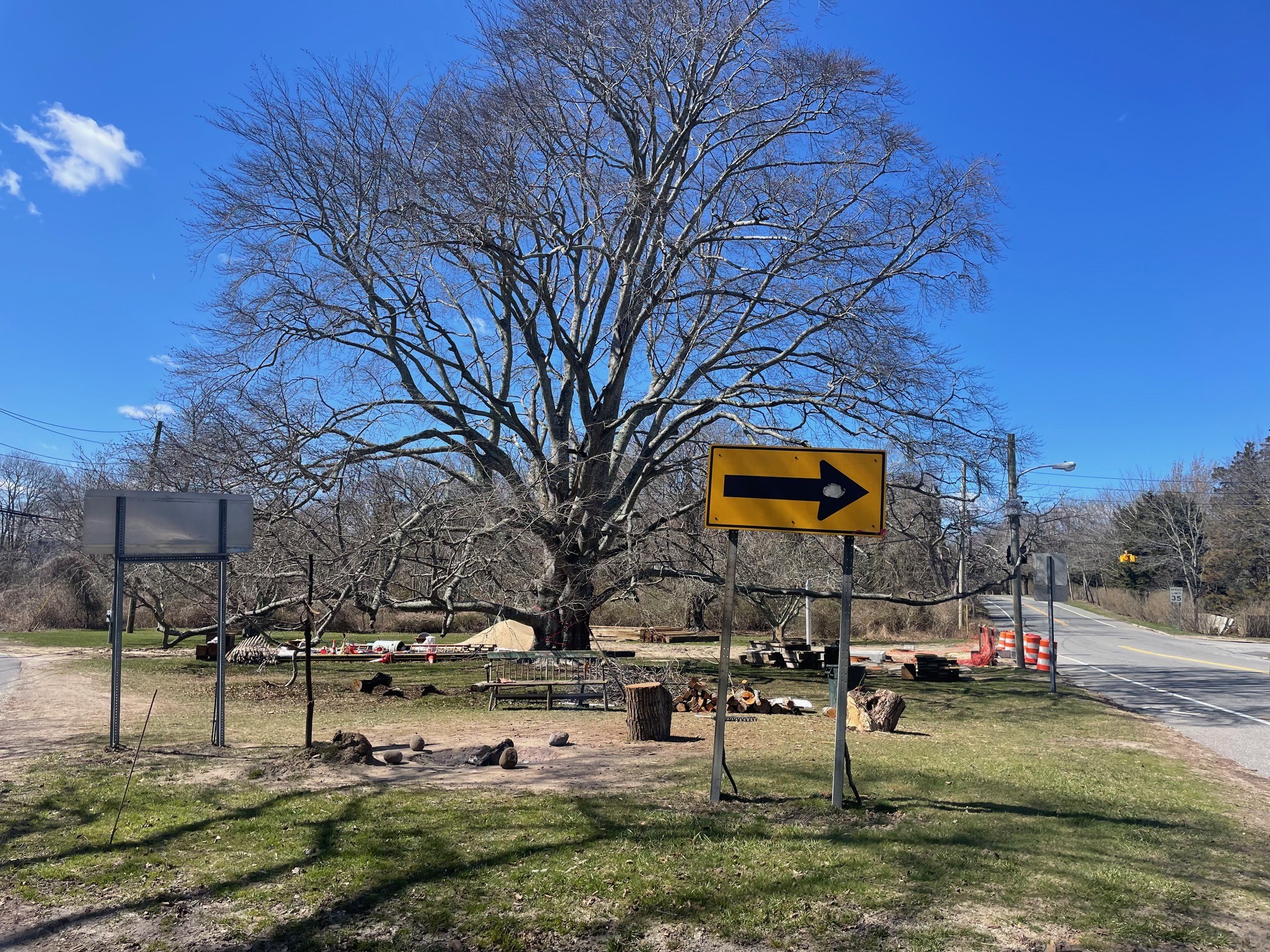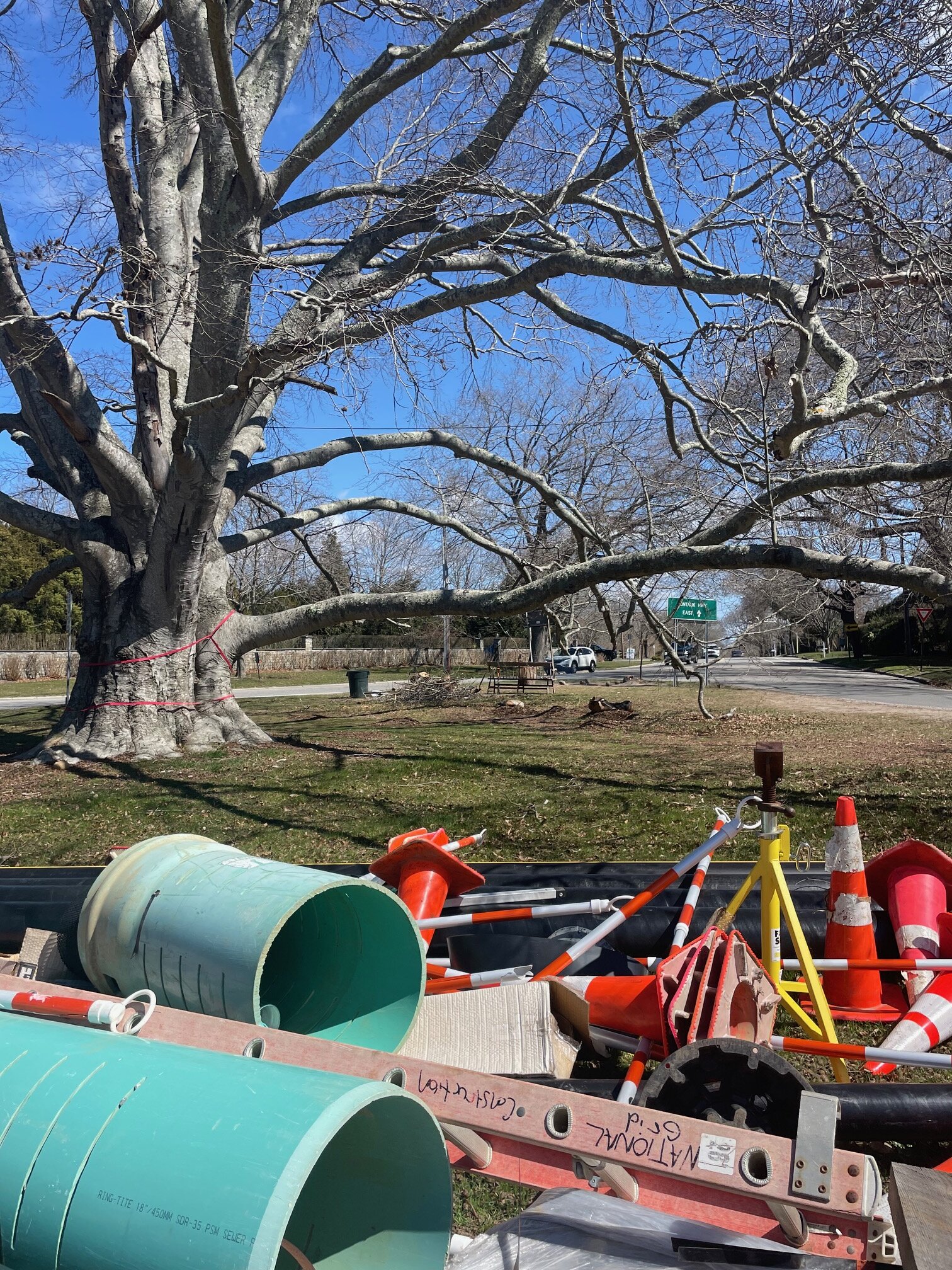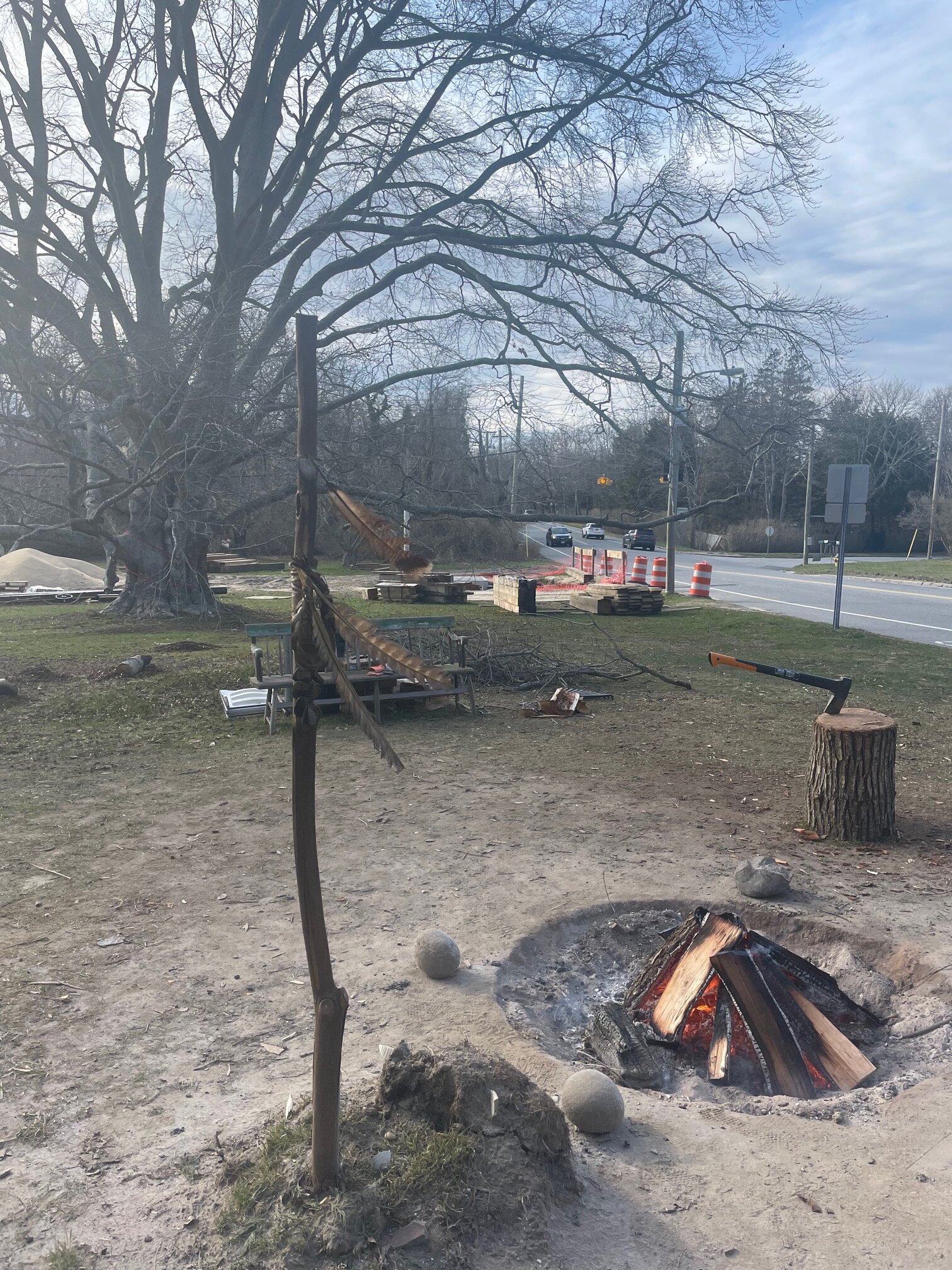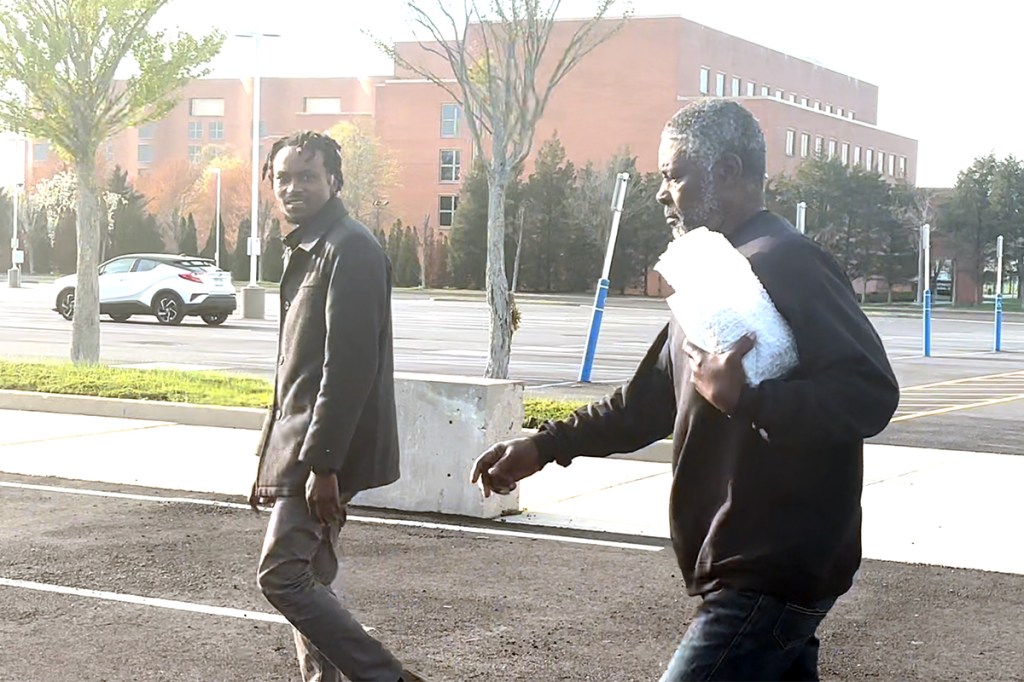Shinnecock Voices: National Grid Puts Centuries Old Beech Tree at Risk

The old beech tree at the foot of the hill of Shinnecock, cornering Hill Street, was actually always safe. No self-respecting white Hamptonite environmentalist was going to let anything happen to that tree, once it was brought to their attention. After all, the tree has no voice to speak for itself, therefore, they must carry the responsibility to speak on the tree’s behalf. The dilettante mentality is a tangible reality of living in the Hamptons.
It is a majestic tree, providing a lovely and spectacular display of blossoms every spring. The safety of that tree was more assured than the safety of the sovereignty of the Shinnecock Nation people and land.
The economic engine of the Town of Southampton is real estate. Buying and selling land, all of which was illegally obtained, if not outright stolen, from the native Indigenous people. The Shinnecock people.
Since the arrival of the first wave of English and Dutch immigrants to this area, the homelands of the mighty Shinnecock Nation have been shrinking. Our territory once spanned all the land and waterways between what is now known as Brookhaven and what is known now as East Hampton. Shinnecock families lived in villages from end to end in this territory, east to west, north to south. Each village self-sufficient, its membership never more than 100 to 200, its leadership matriarchal and with societies seeing to all the needs of the people and the camps. Living in harmony with the natural world for over 10,000 years.
And so it was until the 1600s and the arrival.
It really is a damn shame that the real history of the founding of the Town of Southampton and the subsequent creation of the neighboring towns and villages is not taught in public schools, even locally. It’s a damn shame that ignorance has allowed land theft to continuously occur since the 1640s.

There is a continuity and constancy to life. We, the direct blood descendants of those Shinnecock ancestors, are taught this, and it is ingrained in our DNA. We are children of the Earth and carry the responsibility of being caretakers of the Earth, our mother. Such is the depth of our connection and commitment to our relatives in the natural world, that our grandmothers and grandfathers passed wisdom down through the generations to resonate in us today. The connection has not been broken. Not in 10,000 years.
The love for our mother upon whose back we should tread lightly, guided the way the people lived on the land. It is in our culture and tradition to show respect to all living things, which includes the animals, birds and trees. These are sacred beings. In a cosmology tens of thousands of years old, trees have always been regarded as sacred beings. But in this same understanding of the universe, and all that it encompasses, is the understanding that human life is sacred as well.
All too often this is apparently forgotten or overlooked. As is the case of the Shinnecock, the original occupants of the East End of Long Island, who in the eyes of the Euro new arrivals were regarded as less than human. It is a well-known fact that envy and fear are triggers for dehumanizing and demonizing entire populations throughout history.
However, this article is not meant to be a history lesson.
There is far too much historical territory, pun intended, to cover here on these pages. These words are meant to convey the reality of today.
At the foot of the hill of the Shinnecock Nation territory, the land commonly referred to as the reservation, is a beech tree of indeterminate age and origin. This tree came to general exposure due to the work of National Grid on the land surrounding the tree.
Firstly, the Shinnecock people brought attention to the digging around the tree, on the triangular section of land that forms the divide between Hill Street and Shinnecock heading west. This raised the ongoing, but rarely spoken, question of the true ownership of the land piece within the tribe; and then raised with the Town of Southampton and Southampton Village. This dispute has lain quietly simmering under the surface since 1926 when a pipe ditch was dug by the town at the top of the triangular incline going onto the reservation.
Apparently, over the years from then until now, the Town of Southampton morphed the consent of tribal leaders to have a ditch dug and a pipe laid across “the Indian land” (their words), into some sort of agreement wherein Southampton becomes the “owners” of said land.
So now in 2023, the Village of Southampton assumed the authority, as the “landowners,” to grant National Grid a permit to do its work, involving large machines, of digging up the earth around the tree. The roots of this tree were being threatened with fatal damage if the digging was not carefully done.
Once the general public was made aware of the situation — due to the outrage of the Shinnecock people that another piece of their Earth was being ripped up and desecrated without the knowledge and full consent of the people — a sacred fire was lit by the people at the very tip of the triangle, calling the attention of the local population and the ancestors.
The element of fire is integral to our way of life, and each fire has its significance. This fire, which burns constantly in front of the tree, is a call to action:
Action by the Shinnecock Nation to assert our sovereignty and continuous “ownership” of the land.
Action by the Village of Southampton to answer for this particular attempted land grab, as well as other properties in serious question.
Action by professed supporters to stand beside the Shinnecock People in our ongoing struggle with the Town and Village of Southampton to retain and protect our homeland.
Whatever work National Grid did there on that parcel was not done to benefit the Shinnecock Nation in any way.
Rumors and stories abound about gas lines and transfer stations that required being put underground in that exact location. According to one story, the recipients of the National Grid work are between five and 10 mansions somewhere in the neighborhoods of Meadow Lane and Gin Lane.
This work on the Shinnecock Nation land is reminiscent of the 1926 pipe laying across Shinnecock land. The village took that opportunity to quietly lay claim to the triangle and perpetuate the lie that any land that falls below the 1926 ditch line “belongs” to the town.
This is an in-your-face land grab, Shinnecock.
And we, the Shinnecock, have always known this in our hearts.
As my grandmother would often tell me, “At least they can’t put the land in their pockets and walk away with it; they can only steal it with their papers.”
And now it is incumbent upon the village to produce the paperwork that shows that this contiguous parcel of Shinnecock land changed hands from the Nation to the Village of Southampton. How? When? Why?
The Village of Southampton issued a work permit to National Grid allowing them to not only trespass, but to disrupt the wellbeing of the centuries-old beech tree.
The arrogance of the Village of Southampton in this situation is beyond words. It is a direct challenge to the sovereignty of the Shinnecock Nation, and the nation will not tolerate this.

We, the Shinnecock, can speak to the disrespect shown to us, the native people, by treating us as if we were or are stupid. For hundreds of years the Town of Southampton, in particular, has been tricking and stealing from the Shinnecock people. The rich, entitled, white people, who came to populate this East End since the 1600s, saw the beauty and wanted to own it for themselves. The more generous the Shinnecock were to the new arrivals over those years, the more greedy the land speculators (real estate) became.
Real estate’s primary goal was to “separate” the Indians from our land, by whatever means they could possibly devise. Their bag of tricks, in those early, colonial, dirty-dealing days, included alcohol and threats and lies written on papers with words in a strange language.
Southampton’s efforts to achieve their nefarious and illegal goal continues to this day. They may have new tricks, but their goal is the same.
However, this time their efforts will be met on a new, level playing field.
In the year 2024, the people of Shinnecock not only speak your strange language and can interpret the words on paper, there are those of us here who will meet you equal to equal in the boardroom, the surgical operating room and the courtroom, the schoolroom, the rooms of the state government, rooms of the United Nations and art galleries around the globe.
It is time for the Town of Southampton, the Village of Southampton, the State of New York and all other erroneous entities, to show tangible respect to the sovereignty of the Nation of Shinnecock.
In order to move forward, we must first address the past.
Come spring, the tree will blossom and flower like she always has.
The land will still be part of the nation’s territory as it always has been.
The fires of Shinnecock will continue to burn as long as our struggle continues.
We are still here.
Ancestors and descendants.
Margo Thunderbird is a Shinnecock Nation tribal elder, singer, songwriter, storyteller, lecturer and a member of both the Warriors of the Sunrise and the American Indian Movement.
“Shinnecock Voices” is a monthly column in which citizens of the Shinnecock Nation share stories and opinions, and discuss the projects and campaigns they’re working on, to allow readers an inside view into their incredible community.



